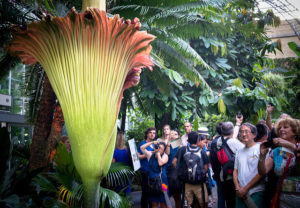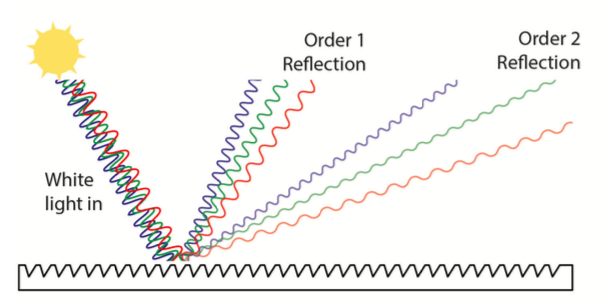TUESDAY, 4 JULY 2017
“It’s important for scientists to be able to communicate about their research, we all know that, but sometimes it’s hard to know quite how to,” explains Beverly Glover, Professor of Plant Systematics and Evolution at Cambridge. Glover is not only Director of the Botanical Garden but also the leader of an active research group and an award winning author, so communication in science has been central to her career.
Alongside its perfection of a flower-filled stroll, the Garden boasts over 8,000 species and has a wider role in research and education. It is this union of an idyllic setting with the scientific research taking place that creates such an ability to aid communication between academics and members of the public. From “cradle to grave”, says Glover, the aim is to engage all ages. Catering for this vast diversity of visitors involves a lot of thinking and “making sure you pitch the right message to that audience”. This ranges from trails for toddlers, to the ‘Science on Sundays’ series that covers the latest research presented by experts. As Glover realises, people may think they are “coming for the coffee and the sunshine”, but learn something about the University’s research as a result.
Glover also talks of the “Cambridge phenomenon,” arguing that the close-knit nature of the community adds to the Garden’s popularity and boosts interest in the scientific goings-on. The attendance of 12,500 patrons over two nights when the Garden’s Titan Arum flowered illustrates this shared excitement about plants. The tight community and opportunity to collaborate is also responsible for keeping Professor Glover in Cambridge throughout her research career.
 A flowering Titan Arum - photograph by Victoria Pickering
A flowering Titan Arum - photograph by Victoria PickeringGlover’s own research has been heavily reliant on the collaboration of distinct disciplines, including work with “physicists, chemists, mathematicians and behavioural scientists”. The prospect of language barriers and confusion in this type of work may be enough to nauseate many scientists, but “always fun” and “energising” are Glover’s typically enthusiastic opinions of such collaborations:
“You can take a strongly interdisciplinary approach to give you an integrated overview of a problem... I guess that approach is one of the things I am proudest of.”
With an initial ambition to study Marine Biology, Professor Glover’s academic journey has been full of surprises. Realising “how much fun plants were” was a lucky outcome of the obligatory breadth of her undergraduate course at St Andrews University. Following this passion, she has taken further inspiration from the Gardens themselves. For example, after spotting a Hibiscus trionum growing in the Garden one day, she realised “that’s funny, I don’t know how you make that funny-coloured texture on that surface.” This unusual epiphany sparked her interest in plant nanostructure, forming the basis of an inspirational research programme.
Have you ever thought of flower petals as the roadside billboards of the natural world? They encourage the travelling pollinator to stop and stay for a while, making sure to carry some pollen with them on the way out. This suggests that a plant’s ability to propagate is very much dependent on the quality of their petals’ “display technology.” Glover is interested in that very idea, and studies how flower petals manipulate light and colour to provide a signal to pollinators.
 CD Abstract - Bill Gracey
CD Abstract - Bill GraceyAccording to Professor Glover, “most of the colours you see in plants are produced in the same way as the colours in the clothes we are wearing. So it’s a chemical pigment that absorbs light of some wavelengths and we see the colours that are left behind.” However, in the flowers her group studies, the colours are produced by structures on the surface of the petal which have dimensions measured in nanometres (one billionth of a metre). This infinitesimal length scale is similar to the wavelength of light, so organizing these structures in an ordered way causes
it to interact with light in such way that some colours, and not others, will reflect off the surface in different directions. This kind of structure is called a diffraction grating. It is the same type of feature that produces different rainbow-like effects on CDs depending on how the disk is tilted. As with a CD, the observed colour of the petal will change as the angle of view changes, an optical effect known as iridescence.
The motivation for the project actually came about through a stroll in the Cambridge Botanical Garden. One of Professor Glover’s students picked a hibiscus flower one day and was surprised to see a rainbow-like colour effect like the kind you see in an oil slick or the surface of a soap bubble. Intrigued by what was causing this effect, they studied the petal under an electron microscope and noticed nanometre- scaled ridges producing the diffraction grating on the surface.
 Diffraction Grating Nanotexture - Oran Maguire
Diffraction Grating Nanotexture - Oran MaguireWhen asked about future directions of this project, Professor Glover answers:
“What I really want to know is how you build it—how a living tissue builds a nanostructure so regular that it interferes with light in a predictable way.”
Glover’s group is creating their own line of hibiscus plants using genetic modification techniques to study how these petal nanostructures begin to form. According to her, although iridescence in flowers is a rather uncommon trait, plants which have this trait have very distinct evolutionary histories. This suggests that the trait evolved separately multiple times. Since the nanostructures of various iridescent plants appear very different when studied under a microscope, the Glover group is interested in determining whether or not they have also formed using different mechanisms.
The Cambridge University Botanical Garden is more than just a beautiful place to spend an afternoon. It is also an important research tool for numerous Cambridge scientists from a wide range of disciplines. Professor Glover’s own research is a prime example of how the garden even inspires curiosity about new research topics, like a flower petal’s captivating light show.
